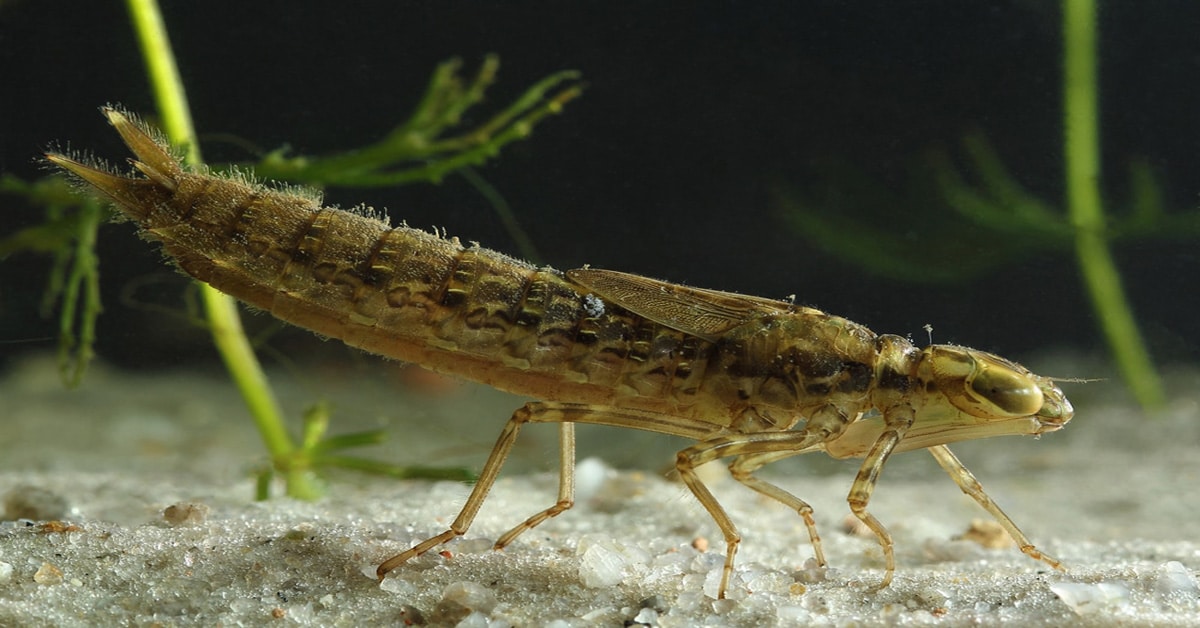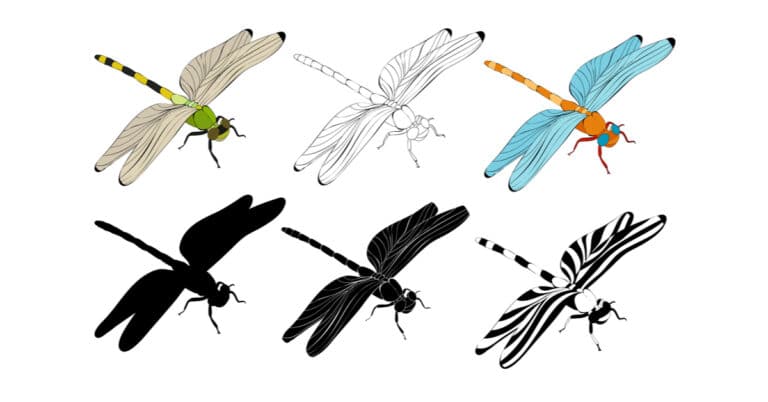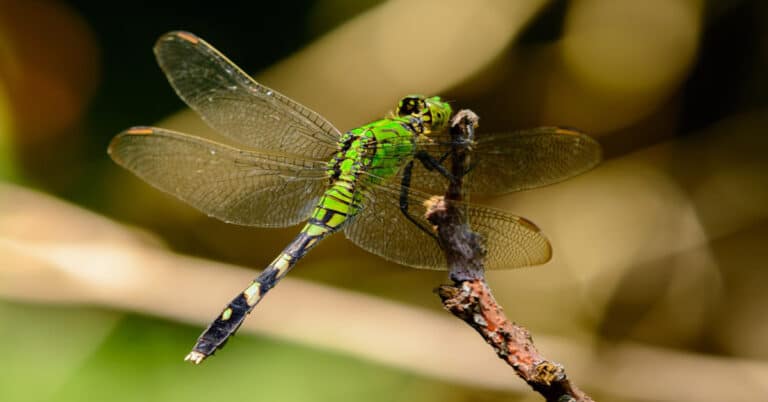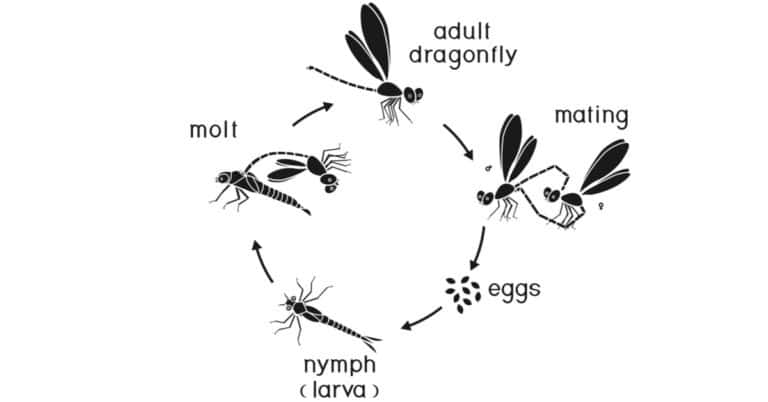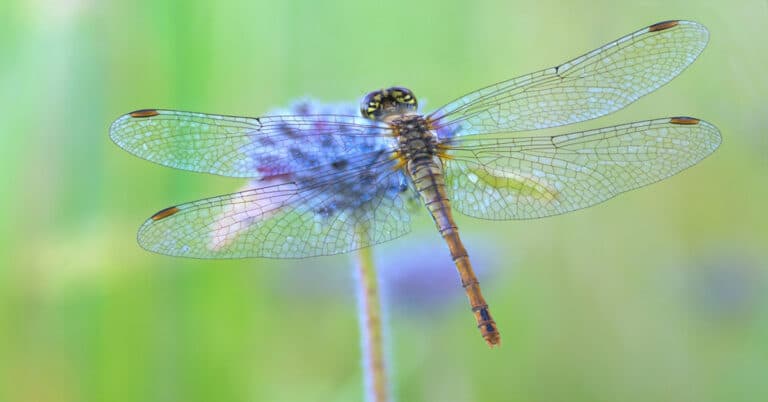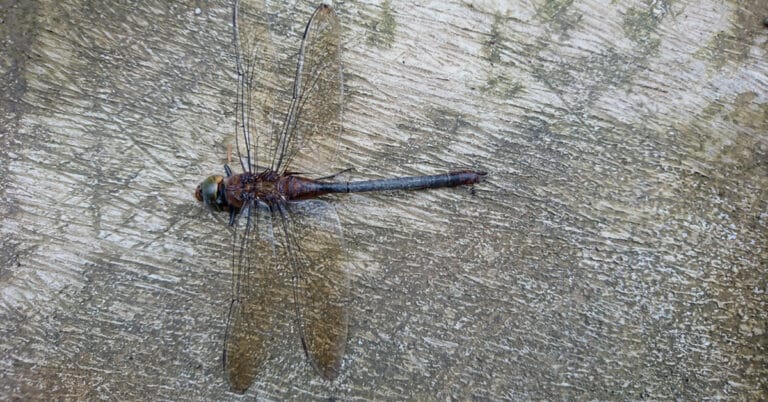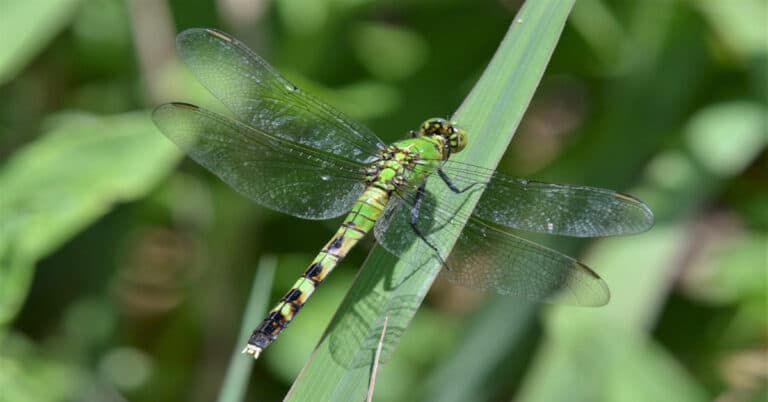Dragonfly Larvae
A Dragonfly Insect belongs to the suborder Anisoptera, and to the Odonata order. It is small and fragile in appearance but is considered as a voracious predator. Researches on dragonfly reveal that they are one of the most effective, brutal hunters in the whole animal kingdom. A dragonfly larva is evolved from the hatched egg. A dragonfly spends most of its life in the larvae stage, which is rarely seen because; at this stage they live under water in some ponds and lakes.
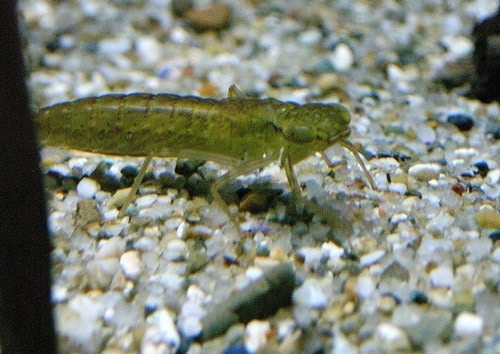
Description
Dragonfly nymphs are seen in various forms, and are classified as Sprawlers, Claspers, Burrowers and Hiders. The first stage of Instar is referred as Prolarva which is comparatively an inactive stage. From this inactive stage, it quickly transforms into an active Nymphal stage. The body structure of the larvae is just like the adult dragonfly, except that the larvae do not possess reproductive organs and wings. This creature catches prey with the extensible labium in the lower jaw, armed with spines and hooks. In the normal times, this labium is found to be resting under the body in a folded form, but thrust out at a high speed due to the hydraulic pressure formed by the muscles of the abdomen. These dragonfly nymphs possess internal gills, situated near the fifth and fourth abdominal segments.
Habitat
The dragonfly larvae are aquatic in nature, and are found under the water in rivers, streams, lakes, ponds and wetlands. They mostly prefer the areas where the water is still or slowly moving. They stick to the bottom parts of wood or rock submerged in the water.
Lifecycle
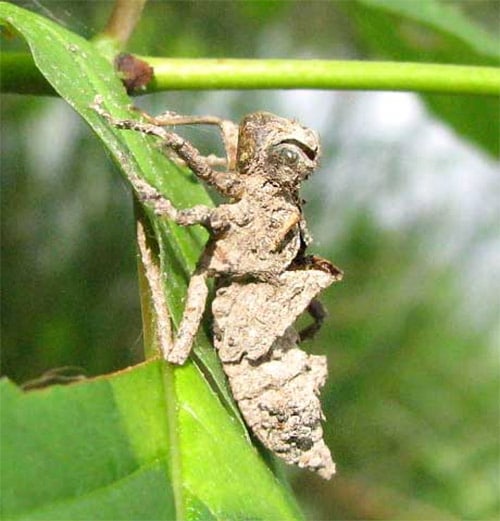
In a single clutch of an adult dragonfly, around 1500 eggs are produced, which takes 7 days to hatch and evolve as an aquatic nymph. This larval stage of dragonflies extends till five years in big species, and around two months to a period of three years in smaller types. At this stage, it feed on tadpoles, small fish and mosquito larvae with its toothed mouth part known as labium. They respire through the gills present in the rectum. In this stage, the larva molts around 6 to 15 times. When the larva gets ready to transform into an adult dragonfly by the process of metamorphosis, it stops eating, and emerges from the water to the surface, mainly at night. Gradually its respiratory organs start to breathe air, and its head alone stands out of the water. Later, it climbs on some emergent plant or reed and starts to molt. Then it anchors itself vertically with the help of its claw, and slowly its skin behind the head, starts to split. Thus the larvae stage comes to an end, and the adult dragonfly emerges out of this larval skin.
Food
These Dragon larvae are predators, and hunt small insects, mosquito larvae and small crustaceans. Young larvae wait till any insect passes, and suddenly capture with their labium. When they develop and grow larger, they start to feed on small tadpoles and fish.
Infections
The small dragonfly larvae are mostly affected by the water mites referred as Hydra carina that can cause their death. The protozoa called Gregarines affect the gut, and cause secondary infection and blockage. The Cercaria, which is the initial stage of the Trematodes parasite are sometimes consumed by the Dragonfly larvae. This parasite tunnels through the body wall of the larvae, and reaches the gut to form a Metacercaria or a cyst. This cyst remains in the body of the larvae till its end.

Having discovered a fondness for insects while pursuing her degree in Biology, Randi Jones was quite bugged to know that people usually dismissed these little creatures as “creepy-crawlies”.

